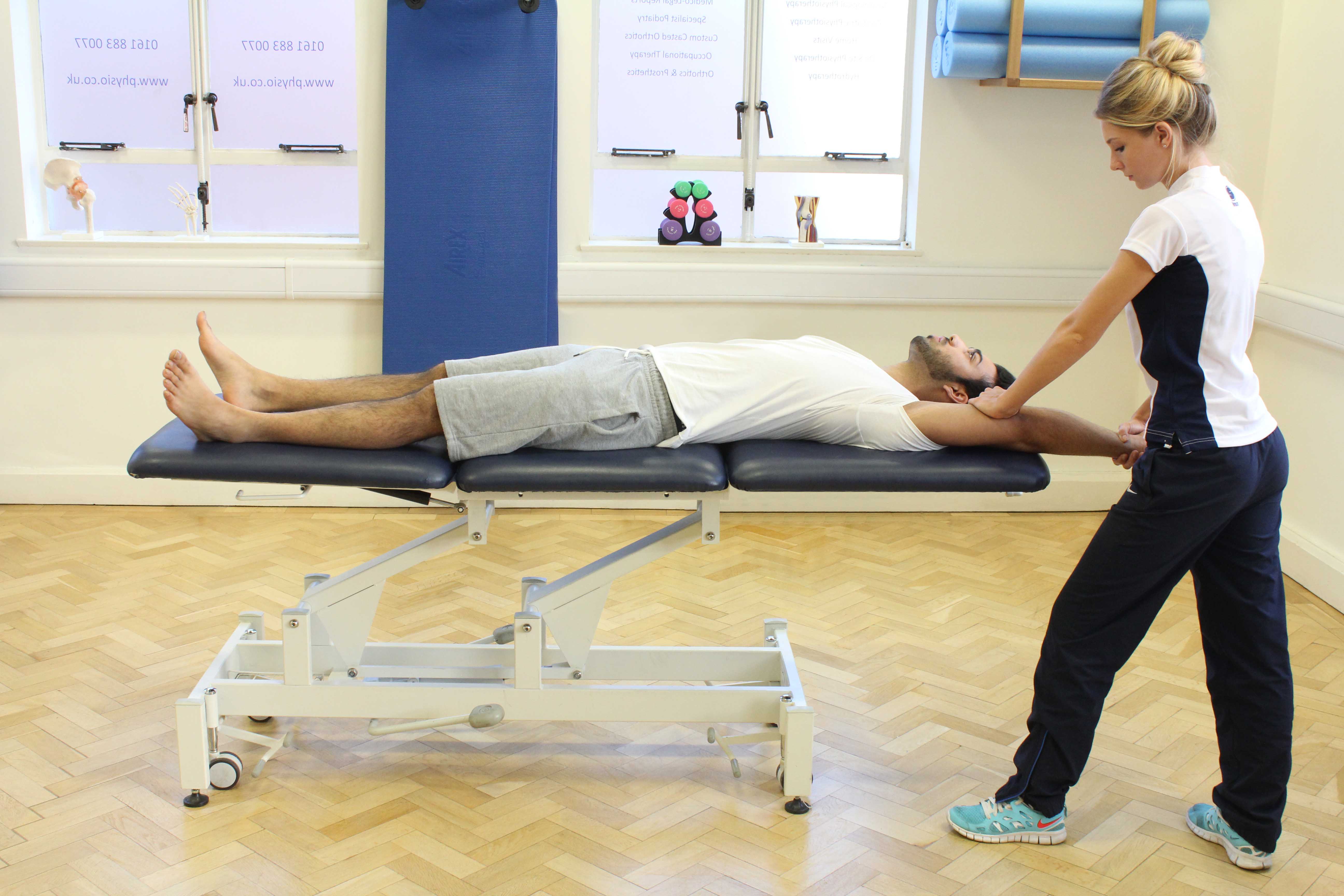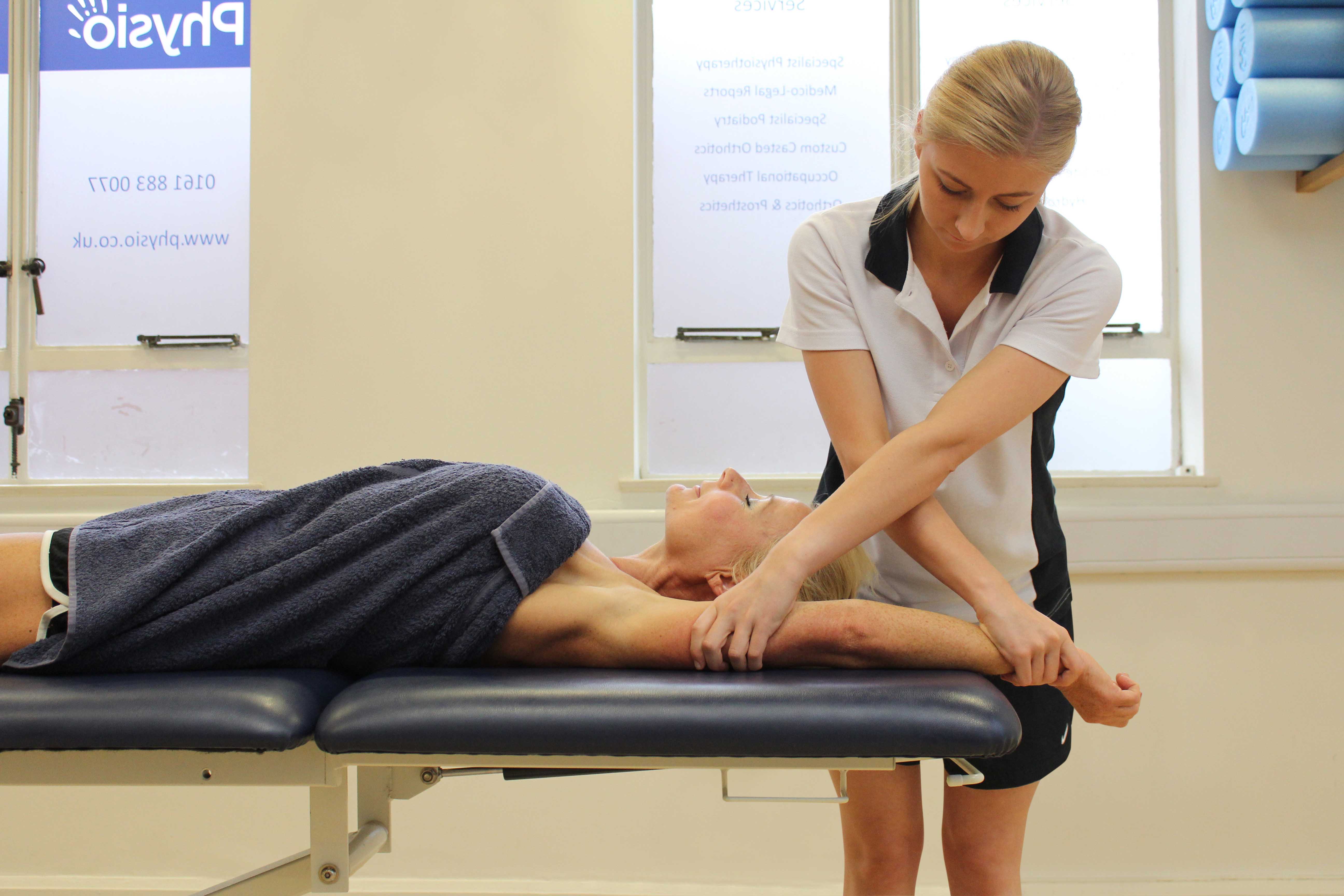What is a fracture of the radial head?
The radius is the one of two bones in the forearm. It extends from the elbow to the thumb side of the wrist. A fracture of the radial head is the name for a break in this bone just below the elbow. Physiotherapy is an important part of the rehabilitation following a radial head fracture.
 Above: Passive stretch of the muscle and connective tissue around the elbow
Above: Passive stretch of the muscle and connective tissue around the elbowWhat can cause a fracture of the radial head?
Fractures of the radial head are most commonly caused by a fall onto an outstretched hand.
What are the symptoms of a fracture of the radial head?
A fractured radial head often causes swelling over the outside of the elbow and limited elbow movement due to pain. Other symptoms may include:
What should I do if I have a fracture of my radial head?
A fractured radial head is a serious injury. If you have, or suspect you have a fracture of your radial head, you should immediately go to the nearest accident and emergency department. To help with your pain and reduce and control any swelling you can apply ice to the elbow. Ideally, this should be in the form of crushed ice wrapped in a moist towel or cloth applied for up to 20 minutes.
 Above: Soft tissue massage and stretch of the muscle and connective tissues around the elbow
Above: Soft tissue massage and stretch of the muscle and connective tissues around the elbowWhat shouldn’t I do if I have a fracture of my radial head?
If you suspect that you have fractured the radial head, you should not perform activities which may cause the broken ends of the radius to move in relation to one another. Therefore, you should not try to use the injured arm until it has been assessed in accident and emergency. You should also avoid activities which may increase the blood flow to the injured area. These include hot showers, heat rubs, massage and the consumption of alcohol. Activities that increase blood flow to the injured area may increase the bleeding around the fractured ends of bone and could, therefore, prolong your recovery.
Physiotherapy for a fracture of the radial head.
The initial management following a fractured radial head should be undertaken at an accident and emergency department. X-rays will be taken to confirm the fracture and to determine the location and severity of the fracture. Initial management is to stabilise the fracture to allow it to heal. If the fracture is in a satisfactory position then stabilisation will be performed by placing the arm in a cast. If the fracture is not in a satisfactory position then fractured radial head fixation surgery may be performed to set the position of the bones.
Following the initial emergency management in hospital the physiotherapists at Physio.co.uk will be able to provide you with a determination of how long the injury to your radial head fracture is expected to take to heal and determine an appropriate treatment program. Treatment often includes electrotherapy and a progressive series of exercises designed to return you back to normal activity and reduce the risk of ongoing problems. These exercises will initially concentrate on returning the range of movement of your elbow joint and then progress to strengthening of your elbow joint, forearm and upper arm.
Other important treatments include:
Can a fracture of the radial head have any long-term effects?
Many fractures of the radial head heal without complication and many people, with appropriate physiotherapy, go on to make a complete recovery. Due to the complexity of the elbow joint and the location of a radial head fracture many individuals never regain 100% of the range of movement at the elbow joint. This can be due to many factors; poor compliance with physiotherapy, scar tissue, the angle of the radial head, muscular tightness, restriction caused by plates / screws / wires from surgery. Early access to physiotherapy and good compliance with physiotherapy reduces your chances of experiencing long term effects following a radial head fracture.
To arrange a physiotherapy appointment call Physio.co.uk on 0330 088 7800 or book online today.

 0330 088 7800
0330 088 7800

































